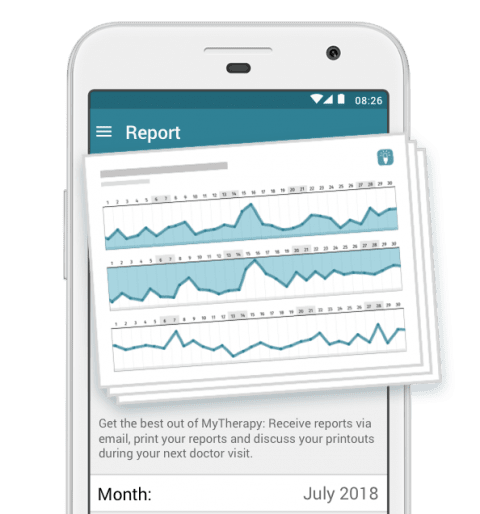What is autism?
Autism, or autism spectrum disorder (ASD), is a spectrum that encompasses a group of neurodevelopmental disorders. People with autism may experience difficulties with communication and social interaction. More specifically they may find it hard to understand how people think or feel or take longer to understand information. In addition, people with autism may exhibit repetitive behaviors or feel anxious and upset when confronted with situations they are unfamiliar with. It is important to stress that autism is not an illness or a disease, and that, since it is a spectrum, everybody experiences it differently.
Autism occurs in many individuals from all over the world, however, it does affect boys more often than girls with a 4 to 1 male-female ratio. In 2018 it was reported that approximately 1 in 59 children in the United States have been identified with autism.
Despite it being a relatively common condition, autism is often misunderstood, and many recognize the need to promote a stronger awareness. Keep reading to find out more about autism and how you could support somebody on the spectrum.
What are the different types
The DSM (Diagnostic and Statistical Manual of Mental Disorders) recognizes five distinct subtypes of autism. These include:
- With or without accompanying intellectual impairment
- With or without accompanying language impairment
- Associated with a known medical or genetic condition or environmental factor
- Associated with another neurodevelopmental, mental or behavioral disorder
- With catatonia
Somebody can be diagnosed with one or more subtypes.
What are the signs and symptoms?
Symptoms of autism typically become noticeable between the ages of 12 and 24 months, however, symptoms can also arise early or later in a person’s life.
The DSM divides autism symptoms into two distinct categories. The first one is problems with communication and social interaction, and the second is restrictive or repetitive behavioral patterns. Individuals will be diagnosed with autism only if they display all three symptoms from the first category and at least two of the symptoms in the second category.
Problems with communication and social interaction include:
- Difficulties with communication including issues with sharing emotions, interests, or maintaining a conversation.
- Issues with nonverbal communication. This can include difficulty maintaining eye contact or reading body language.
- Difficulties developing and maintaining relationships
Restricted or repetitive patterns of behavior or activities include:
- Repetitive movements, motions, or speech patterns
- Rigid adherence to specific routines or behaviors
- An increase or decrease in sensitivity to their environment, such as a negative reaction to a specific sound or bright light
- Fixated interests or preoccupations
Autism and ADHD: What’s the link?
It is important to understand the differences between autism and ADHD since they are often confused with one another.
Children diagnosed with ADHD share some traits with some people on the autism spectrum, such as problems with fidgeting, concentrating, and maintaining eye contact with other people. However, one of the key differences is that people with autism have trouble with communication and social interaction, which is not the case with ADHD.
It is important to note though, that a person can have both ADHD and autism.
What causes autism?
There is no specific cause of autism, however, some of the factors which are thought to increase an individual’s chances of developing autism are:
- Having an immediate family member with autism
- Genetic mutations
- Being born to older parents
- Metabolic imbalances
- Fragile X syndrome
- Genetic mutations
Do vaccinations cause autism?
The simple answer to this is, no.
A controversial 1998 study proposed a link between autism and the measles, mumps, and rubella (MMR) vaccine. However, that study has been debunked by other research and was eventually retracted in 2010.
All evidence shows that the MMR vaccine is the safest and most effective way to protect against measles, mumps, and rubella.
How is it diagnosed?
Autism can be diagnosed using a variety of different methods such as screenings, genetic tests, and evaluations. These can include:
- Developmental screenings
Screening can help identify autism in young children, who may benefit from an early diagnosis and intervention. It may involve parents completing a questionnaire or survey about their toddler’s behavior which a pediatrician can then examine. However, it is important to realize that screening doesn’t count as an official diagnosis. Children who screen positively for autism may not have the disorder, and others who do have it may not be identified. - DNA testing for genetic diseases
People who have an immediate family member with autism may have a higher chance of being born with the disorder. DNA testing can highlight any hereditary disorders. - Behavioural evaluation
- Video and audio tests
These can rule out any issues with hearing or vision that are not related to autism - Occupational therapy screening
This involves the observation and assessment of an individual as they go about their daily occupations and activities. - Developmental questionnaires
A common example is the Autism Diagnostic Observation Schedule (ADOS)
How is it treated?
Just as there is no single cause for autism, there is also no single treatment. There are no cures for autism, meaning that those born with it will have it for their whole lives. However, it is important to understand that people living with autism can live a full and happy life. There is a range of treatment options available to help individuals cope with their symptoms.
Every case of autism is different, and the treatment approach will depend on the specific nature of an individual’s disorder. Some common therapies can include:
- behavioral therapy
- physical therapy
- speech therapy
- occupational therapy
- chelation therapy, which involves flushing metals from the body
- hyperbaric oxygen therapy
Massages, weighted blankets, and medication techniques may also help to produce a calming effect.
People with autism can also make a slight adjustment to their diets to make the management of symptoms easier. These adjustments can include:
- avoiding artificial additives such as preservatives, colors, and sweeteners
- incorporating more whole foods into the diet such as fresh fruits and vegetables, lean poultry, fish, and unsaturated fats
- drinking lots of water
Parents may also find that ensuring their child gets sufficient exercise may help alleviate the symptoms of autism and provide a sense of well-being. Almost any kind of exercise can be beneficial to a child with autism. Swimming especially can serve as a sensory play activity that can help children who are struggling to process signals from their senses. However, contact sports may prove challenging for children with autism.
How to support people with autism
Supporting people with autism begins with awareness. Only by developing a better understanding of how autism affects individuals’ lives in different ways, can we offer adequate support to those with the disorder. It is always important to display empathy, kindness, and patience.
April is World Autism Month and has been named National Autism Awareness Month in the United States. However, increasing awareness shouldn’t just be a project that lasts for a month, but one that is ongoing throughout all points in the year.
Autism Speaks is committed to making 2020 the "Year of Kindness" for people with autism, with a bold goal to achieve one million acts of kindness, big and small. You can find out more about this initiative here



